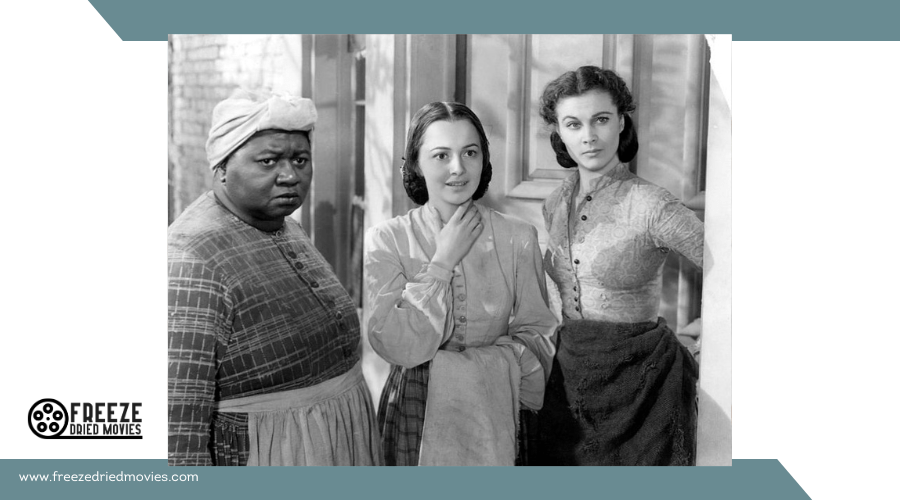Top 10 Must-Watch Movies From the 1930s

The 1930s were a transformative decade for cinema, featuring groundbreaking films that have left an indelible mark on film history. From the pioneering animation of "Snow White and the Seven Dwarfs" to the Technicolor marvel of "The Wizard of Oz," these movies set enduring standards. Romance and comedy shine in "It Happened One Night," while "King Kong" and "Gone With the Wind" offer epic adventures. What makes these films truly unforgettable? Let's explore the artistic innovations and timeless appeal of these classic movies that continue to captivate audiences today.
King Kong
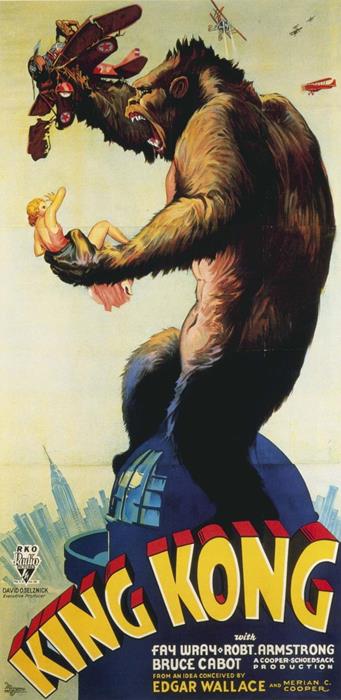
Step into the world of King Kong (1933), a film that revolutionized cinema with its pioneering stop-motion animation. This classic not only advanced the fantasy and monster genres but also set a new benchmark for special effects in the American film industry. The story follows a daring film crew that captures a colossal gorilla named Kong and brings him to New York City. Here, the mighty Kong meets a tragic fate atop the Empire State Building, creating one of the most iconic scenes in film history.
King Kong received critical acclaim for its innovative techniques and compelling storytelling. The relationship between Kong and the female lead, Ann Darrow, adds emotional depth to this thrilling adventure, emphasizing themes such as beauty and the beast, and the consequences of human ambition. With an IMDb rating of 7.9 and a Metascore of 92, this film is a cultural touchstone that has inspired countless adaptations and filmmakers for decades.
If you're exploring must-watch movies from the 1930s, King Kong is essential viewing. Its legacy in the American film industry is undeniable, making it a cornerstone of cinematic history.
Snow White and the Seven Dwarfs
View this post on Instagram
Next on your must-watch list from the 1930s is "Snow White and the Seven Dwarfs," the first full-length animated feature film by Walt Disney Productions. This groundbreaking Technicolor masterpiece not only enchanted audiences but also revolutionized the animation industry with its innovative character designs and storytelling. Its immense success and enduring impact earned Walt Disney an honorary Academy Award, solidifying its place in cinematic history.
Animation Industry Revolutionized
In 1937, Snow White and the Seven Dwarfs by Walt Disney Productions revolutionized the animation industry as the first full-length animated feature film. This landmark production established new benchmarks for storytelling and artistic innovation. Utilizing Technicolor, the film captivated audiences and advanced visual storytelling in unprecedented ways.
Not merely a technical achievement, Snow White and the Seven Dwarfs was also a significant box-office triumph, grossing over $8 million during its initial release—an extraordinary sum for an animated film at the time. This success demonstrated that animated features could achieve both critical acclaim and commercial success. Its 83-minute runtime featured enchanting characters, memorable songs, and a compelling narrative, laying the foundation for Walt Disney's future success.
The film earned critical acclaim and garnered Walt Disney an honorary Academy Award, consisting of one full-sized Oscar and seven miniature ones, symbolizing its groundbreaking impact on cinema. The influence of Snow White and the Seven Dwarfs on animated storytelling is immense, paving the way for numerous beloved animated classics. For those exploring essential films of the 1930s, this transformative masterpiece is indispensable.
Pioneering Technicolor Masterpiece
Building on groundbreaking strides in animation, Snow White and the Seven Dwarfs stands as a trailblazing Technicolor masterpiece that captivated audiences with its spirited visuals and compelling story. As the first full-length animated feature film produced by Walt Disney, it transformed the animation industry with its rich storytelling and well-developed characters, setting a new standard for animated films.
When you watch Snow White and the Seven Dwarfs, you're treated to a lively Technicolor experience that was unprecedented in 1937. The film's use of Technicolor wasn't just a visual delight; it also contributed significantly to its massive box-office success, earning approximately $8 million during its original release—an extraordinary achievement for an animated film at that time.
The film's pioneering efforts were duly recognized. In 1939, it received an honorary Academy Award, acknowledging its groundbreaking contributions to animation. Today, this classic remains a cultural touchstone, influencing countless animated films and characters. With a 7.6 IMDb rating and over 218,000 ratings, Snow White and the Seven Dwarfs continues to be a beloved classic, celebrated across generations for its pioneering spirit and Technicolor brilliance.
Gone With the Wind
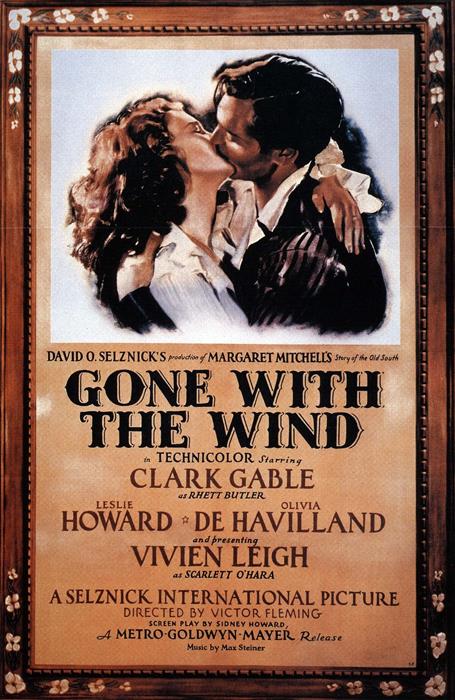
"Gone with the Wind" (1939) captivates audiences with its epic narrative and remarkable visuals. Set against the backdrop of the American Civil War, this historical romance, directed by Victor Fleming, features Vivien Leigh as the resolute Scarlett O'Hara and Clark Gable as the charismatic Rhett Butler. The film's grand scale and innovative use of Technicolor brought vivid, lifelike scenes to the big screen, setting a new standard in cinematography.
The film garnered 10 Academy Awards, including Best Picture, Best Director, and Best Actress for Vivien Leigh, making it one of the most celebrated films in Oscar history. Leigh's compelling portrayal of Scarlett O'Hara and Gable's dynamic performance as Rhett Butler are central to the film's lasting appeal.
At the box office, "Gone with the Wind" achieved unprecedented success, holding the title of the highest-grossing film of all time until 1997. The film's engaging story and star-studded cast drew massive audiences. Iconic lines like "Frankly, my dear, I don't give a damn" have become entrenched in pop culture, solidifying "Gone with the Wind" as a timeless cinematic landmark. This masterpiece continues to captivate viewers with its enduring charm.
The Wizard of Oz

When you think of must-watch movies from the 1930s, The Wizard of Oz stands out with its iconic Technicolor visuals that revolutionized cinematic storytelling. The film's timeless musical moments, such as "Over the Rainbow," continue to resonate with audiences across generations. Its groundbreaking special effects and unforgettable songs make it a cornerstone of film history.
Iconic Technicolor Visuals
"The Wizard of Oz" (1939) captivated audiences with its pioneering use of Technicolor, transforming the world of Oz into a vibrant, visual marvel. This landmark film set a new benchmark for color cinematography, illustrating how radiant visuals can bring a story to life in ways black-and-white film cannot. The transition from the sepia-toned Kansas to the colorful land of Oz exemplifies how Technicolor can enhance storytelling and evoke profound emotions.
Technicolor not only enriched the film's themes of hope and adventure but also proved its commercial viability, inspiring future filmmakers to embrace color as an essential storytelling tool. This visual transformation marked a pivotal moment in cinema history, showcasing the power of color to reshape narrative landscapes.
Here's a closer look at the impact of Technicolor in "The Wizard of Oz":
| Feature | Impact |
|---|---|
| Scene Transition | From sepia Kansas to colorful Oz |
| Color Palette | Vivid and dynamic, enhancing fantastical elements |
| Storytelling Enhancement | Amplified themes of hope and adventure |
| Commercial Influence | Paved the way for widespread Technicolor adoption in Hollywood |
| Emotional Resonance | Fostered deeper viewer connections through visual storytelling |
The success of "The Wizard of Oz" solidified Technicolor's role in Hollywood, ensuring its lasting influence on the industry.
Timeless Musical Moments
"The Wizard of Oz" endures as a cinematic masterpiece for many reasons, with its timeless musical moments capturing the hearts of audiences across generations. Judy Garland's soulful rendition of "Somewhere Over the Rainbow" instantly transports listeners to a world of dreams and possibilities, making it a timeless classic in American cinema and showcasing the film's exceptional musical storytelling.
The film's use of Technicolor, especially in its musical sequences, was groundbreaking for its time, adding an extra layer of magic to the already enchanting moments. The score, composed by Harold Arlen with lyrics by E.Y. Harburg, perfectly complements the narrative, making each musical number an integral part of the story.
"The Wizard of Oz" not only won the Academy Award for Best Original Song for "Over the Rainbow" but also set new standards for future musicals. Its blend of live-action and musical elements remains a cultural touchstone, celebrated for both its storytelling and musicality. Recognized as one of the greatest musicals of all time, the film continues to influence generations of filmmakers and performers in the musical genre.
Mr. Smith Goes to Washington
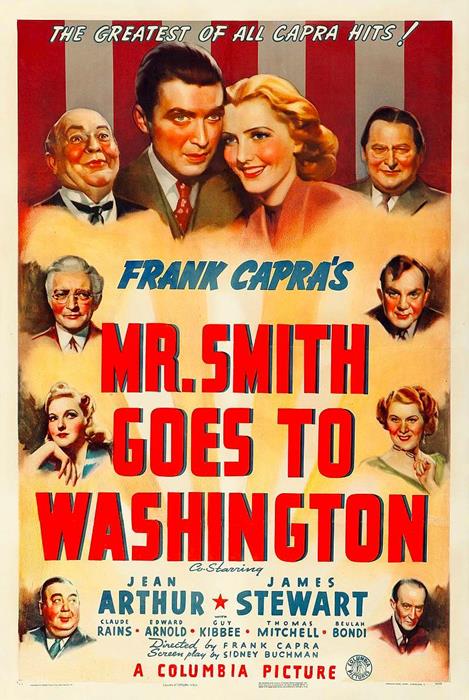
Set in the heart of American politics, Mr. Smith Goes to Washington is a film you can't miss. Directed by the legendary Frank Capra in 1939, this political comedy-drama tackles the themes of political idealism and corruption. You follow James Stewart as a naive junior senator who uncovers government corruption and fights for integrity in the U.S. Senate.
The film's impact is undeniable:
| Fact | Description |
|---|---|
| Academy Awards | Nominated for 11, won Best Original Story |
| Box Office | A significant success |
| Critical Reception | Highly praised, solidified Capra's reputation |
The climactic filibuster scene is one of the most memorable moments in cinematic history. Stewart's character stands up against the corrupt forces within the Senate, showcasing moral courage and determination. This scene alone makes the film worth watching.
Mr. Smith Goes to Washington resonates even today, reflecting ongoing discussions about democracy and civic duty. Capra's direction guarantees the film is both a compelling narrative and a call to action, encouraging viewers to believe in the power of integrity in politics. If you're interested in films that blend entertainment with meaningful social commentary, this one's a must-watch.
Stagecoach
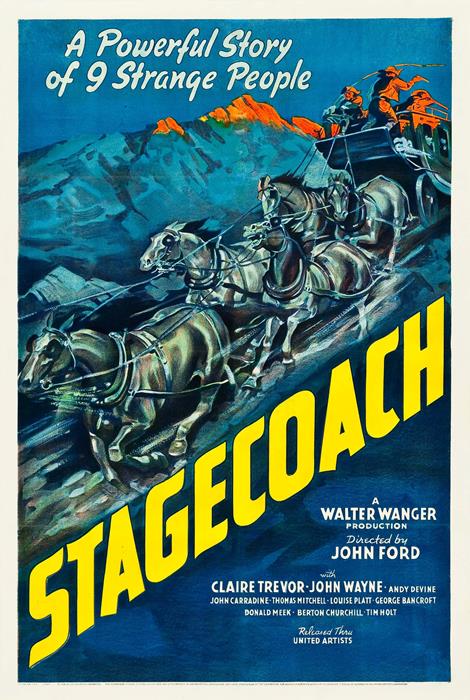
When you've had your fill of political intrigue with Mr. Smith Goes to Washington, dive into the adventurous world of Stagecoach. Directed by John Ford, this 1939 Western classic didn't just entertain; it revitalized the genre. The film follows a diverse group of travelers as they navigate hostile territories, each character offering a unique glimpse into human nature and survival.
Stagecoach is particularly notable for launching John Wayne's career as a leading man. His portrayal of the Ringo Kid, a man seeking redemption, is unforgettable. Often considered one of the first Westerns to delve deeply into character development and moral dilemmas, the film explores themes of class and survival against threats from Native Americans and outlaws.
Critics and audiences alike praised Stagecoach, leading to seven Academy Award nominations and two wins, including Best Supporting Actor for Thomas Mitchell. The film's groundbreaking cinematography, especially its use of deep focus and sweeping landscapes, set a new standard in visual storytelling for Westerns. John Ford's masterful direction has influenced countless filmmakers, making Stagecoach a must-watch for any classic film enthusiast.
It Happened One Night
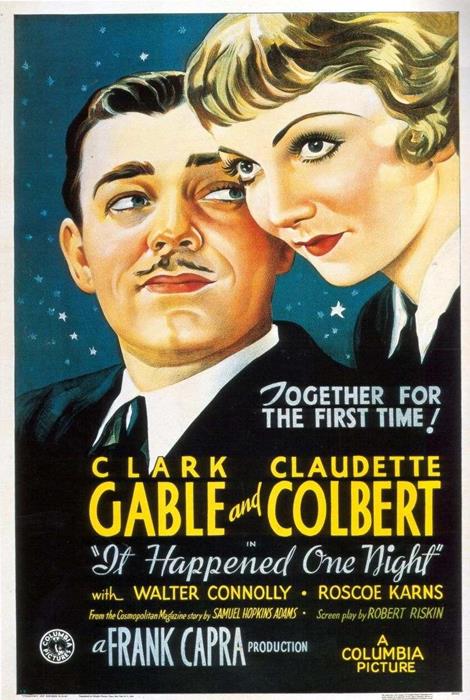
"It Happened One Night," a seminal romantic comedy from the 1930s, is a cornerstone of classic cinema. Directed by Frank Capra, this film swept the five major Academy Awards and highlighted the magnetic chemistry between Clark Gable and Claudette Colbert. Its sharp dialogue and iconic scenes have made a lasting impression on audiences and filmmakers alike.
Groundbreaking Romantic Comedy
"It Happened One Night" (1934), directed by Frank Capra, stands as a trailblazing romantic comedy that reshaped the genre and made cinematic history. The film stars Clark Gable as a cynical reporter and Claudette Colbert as a runaway heiress. Their journey together is filled with comedic misadventures and witty dialogue, ultimately leading to a romantic bond that captivated audiences.
The film's success wasn't immediate; it initially struggled at the box office. However, its charm and creative comedic elements, such as the iconic "Walls of Jericho" scene, eventually won over viewers. This scene, along with the palpable chemistry between Gable and Colbert, set a new standard for romantic comedies.
Here's a quick look at some key elements:
| Element | Description | Impact |
|---|---|---|
| Plot | Reporter helps heiress navigate life and find love. | Influenced countless romantic comedies. |
| Characters | Clark Gable and Claudette Colbert's iconic performances. | Cemented their status as Hollywood legends. |
| Comedic Creativity | "Walls of Jericho" scene and witty dialogue. | Popularized screwball comedy style. |
"It Happened One Night" is credited with greatly influencing the romantic comedy genre and remains a cultural touchstone frequently referenced in cinematic history.
Academy Award Sweep
"It Happened One Night" achieved an unprecedented milestone in cinematic history by sweeping all five major Academy Awards in 1934. This classic romantic comedy won Oscars for Best Picture, Best Director for Frank Capra, Best Actor for Clark Gable, Best Actress for Claudette Colbert, and Best Adapted Screenplay. This remarkable feat cemented the film's legacy and set a high bar for future romantic comedies.
The significance of "It Happened One Night" in the context of the Academy Awards cannot be overstated. Winning all the top categories was unheard of at the time, making it a trailblazer in Hollywood history. Initially, the film had a slow start at the box office but eventually became one of the highest-grossing films of its era, transforming its status from a sleeper hit to a timeless classic.
When exploring must-watch movies from the 1930s, "It Happened One Night" stands out for its accolades, enduring influence on the romantic comedy genre, and its perpetual place in cinematic history.
Chemistry and Charm
From the moment Clark Gable and Claudette Colbert share the screen in "It Happened One Night," their chemistry captivates the audience. As a runaway heiress and a cynical reporter, their on-screen rapport is the heart of this pioneering romantic comedy. Their witty banter and playful conflicts not only define their dynamic but also laid the groundwork for the screwball comedy genre that flourished in the 1930s.
Directed by Frank Capra, the film's charm is undeniable. Gable's iconic scene of removing his shirt to reveal his bare chest became a symbol of masculinity, adding to the film's lasting appeal. Colbert's portrayal of the spirited heiress perfectly complements Gable's rugged charm, creating a compelling dynamic.
"It Happened One Night" set a high standard for future romantic comedies by winning all five major Academy Awards: Best Picture, Best Director, Best Actor, Best Actress, and Best Adapted Screenplay. This success influenced Hollywood's approach to romantic storytelling, emphasizing character-driven narratives and the significance of on-screen chemistry. If you're exploring the best movies from the 1930s, the chemistry and charm of "It Happened One Night" make it a crucial watch.
All Quiet on the Western Front

"All Quiet on the Western Front" (1930), directed by Lewis Milestone, is a poignant anti-war film that captures the grim experiences of German soldiers during World War I. Based on Erich Maria Remarque's acclaimed novel, it follows a group of friends who enlist with youthful idealism, only to face the brutal realities of trench warfare.
The film portrays the characters' journey from enthusiastic recruits to traumatized veterans, highlighting the psychological and physical impacts of war. Its powerful narrative and emotional depth earned it the Academy Award for Best Picture, cementing its enduring impact.
Milestone's innovative use of sound and cinematography set new standards for film production of the time. Realistic battle scenes and the soldiers' anguished expressions vividly depict the horrors of World War I, making viewers feel the weight of their experiences. "All Quiet on the Western Front" remains a significant cultural reference, influencing many filmmakers and anti-war narratives. It's a must-watch for anyone interested in war cinema and its ability to convey the futility of conflict.
The Adventures of Robin Hood

In 1938, "The Adventures of Robin Hood" captivated audiences with its tale of heroism and justice. Directed by Michael Curtiz and William Keighley, this classic swashbuckler stars Errol Flynn as the legendary outlaw Robin Hood. Set in medieval England, the film portrays Robin Hood's fight against injustice, making him an enduring symbol of bravery and defiance.
Notably, the film's groundbreaking use of Technicolor created a vibrant visual experience. The lush, colorful scenes and dynamic action sequences were revolutionary, bringing the story to life like never before.
Critically acclaimed, "The Adventures of Robin Hood" received four Academy Award nominations and won two for Best Original Score and Best Art Direction. These accolades highlighted the film's technical and artistic achievements, solidifying its legacy.
With its blend of adventure, romance, and humor, the film redefined the Robin Hood legend in popular culture. Often hailed as one of the greatest films of all time, it boasts an IMDb rating of 7.9 and a Metascore of 97. This enduring classic continues to inspire countless adaptations and remains a must-watch from the 1930s.
The Rules of the Game
Jean Renoir's The Rules of the Game (1939) is a cornerstone of film history, offering a profound examination of French bourgeoisie life on the eve of World War II. Essential viewing for anyone interested in the evolution of cinema, Renoir deftly explores the intricacies of upper-class relationships, exposing their superficiality and contradictions.
The film's innovative use of deep focus cinematography and fluid camera movements marked a significant advancement in filmmaking techniques, profoundly influencing generations of directors. Although initially met with mixed reviews, it has since been recognized as one of the greatest films in cinema history, boasting a 7.9 IMDb rating.
Key elements of its impact include:
- Cinematography: Deep focus allows visibility of every detail in both the foreground and background.
- Camera Movements: Fluid shifts create a dynamic and lively visual experience.
- Famous Line: "Everyone has his reasons," encapsulating the film's themes of moral ambiguity.
- Satire: A sharp critique of the upper class, illuminating their pre-war social interactions.
The Rules of the Game remains an essential part of any film enthusiast's collection.



